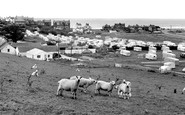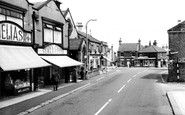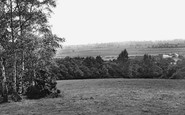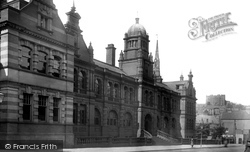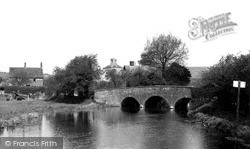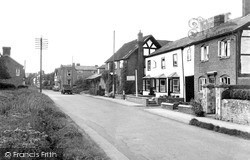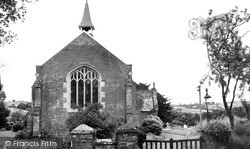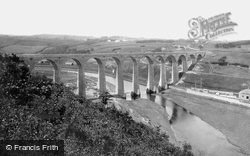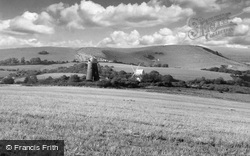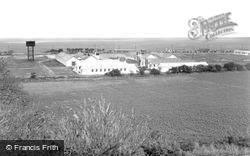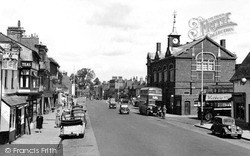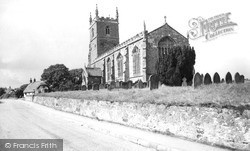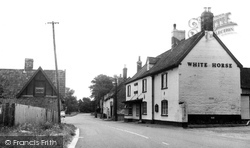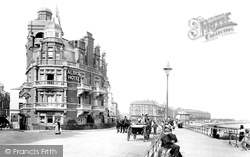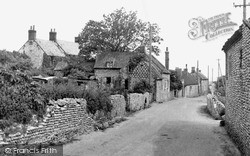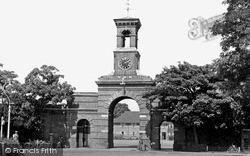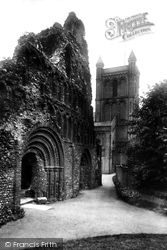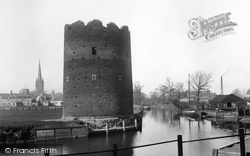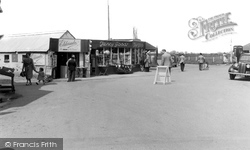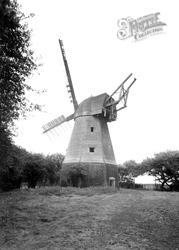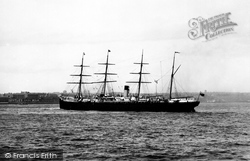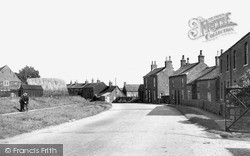Places
2 places found.
Those places high-lighted have photos. All locations may have maps, books and memories.
Photos
5 photos found. Showing results 141 to 5.
Maps
29 maps found.
Books
Sorry, no books were found that related to your search.
Memories
668 memories found. Showing results 71 to 80.
Halls Of Galmpton
The Hall family lived scattered about Devon since the late 1600's, from what I can gather. In the 1850's to the 1890's they seemed to settle around Galmpton and Dittisham, later into Torquay and beyond. My GGG Grandfather William ...Read more
A memory of Galmpton in 1860 by
My Love Of Brynowen Continues
I do not remember my first visit to Borth as I would have been a few months old around about the spring of 1963. As a family we then returned every year staying at Brynowen, sometimes twice a year, until I turned 18 at the ...Read more
A memory of Borth in 1963 by
East Anglian Marshland Memories
I sat and talked with a man of God, about people and places we have known and loved. As part of my life being spent on the Marsh, formative years that were oft-times harsh. Such happy memories tumbled back to ...Read more
A memory of Holbeach St Marks in 1960 by
25 Parkgate Road
I was born in Battersea 1950, son of Mr & Mrs Redpath (Wally & Edith) I had two other brothers Terry & Garry. Fond memories of Battersea Park and of spending many days in and around the park with other kids from Elcho ...Read more
A memory of Battersea in 1950 by
Downshall Secondary School
I have very fond memories of Downshall Secondary where I was between 1958 and 1962. I used to live in Downshall Avenue, and we used to walk everywhere, to school, to Seven Kings Park and the park up Meads Lane. We ...Read more
A memory of Seven Kings in 1960 by
V2 Rocket Dropped On Hatley Avenue
Late in Feb 1945 (I think it was the 25th) I was at Geary's school when during the dinner break a neighbour of my own age Sheila Solomon told me that my house had been bombed. At the time I lived at 39 ...Read more
A memory of Barkingside in 1945 by
Waiting For The Bus
To the right of this picture, on the High Street was the town hall. For seven years I waited there every morning for the Jump Circular bus, or if I missed it the Rotherham bus to take me into Barnsley where I was at the then ...Read more
A memory of Hoyland in 1961 by
Wonderful Memories Of Kessingland
My father was born in Kessingland in 1915 and as little children my sister, brother and me would go regularly to visit my grandparents there. They ran a grocery shop in Chapel/Church Road, the first house from ...Read more
A memory of Kessingland in 1953 by
When We Were Young!
Way back in the early 1950's my friends and I went everywhere on our cycles. On one occasion three of us set out from Grays and went across the ferry at Tilbury to Gravesend then down the old A road to Canterbury where we had a ...Read more
A memory of Corringham by
Early Days
I was born and brought up in Pembroke terrace and with number of lads of like age wandered the mountains through theSaucy ap and over to overlook the Rhondda . We would climb up an run down hills,run through rivers and ply cowboys and ...Read more
A memory of Ogmore Vale by
Captions
388 captions found. Showing results 169 to 192.
Built of red brick, the Shire Hall was designed by local architects H Barnes and F E Coates, and was completed in 1898.
The village is in a Conservation area, with plenty of brick-built thatched houses in its centre.
The mill was a Lincolnshire-style brick tower with an onion-shaped cap. It had five patent shuttered sails, as is indicated by the five-way cross on the front of the windshaft, and a fantail.
There are a number of lovely timber-framed buildings in this village, and many more that were once of timber, until a brick façade was added at a later date.
Rye House 1904 The front aspect of the mid-15th-century red brick gatehouse of Rye House, the scene of the ill-fated 1683 Whig conspiracy to ambush Charles II as he returned to London from Newmarket
The apparent bricks in the wall are in fact neatly dressed stones; the west window tracery is carved from a pale freestone.
This handsome terrace of Victorian houses, built in distinctive white 'Pease' brick overlook the Coronation Park.
The first brick was laid in 1882 and the first locomotive crossed the thirteen-arched viaduct in 1884.
Jack, on the left, is a large brick-built tower mill which was worked until the early part of this century.
Today just a few brick ruins mark the existence of the camp.
A No 82 bus stands outside the Victorian red brick Town Hall. Thame became a market town during the 13th century, and its importance as a commercial centre is still evident today.
The thatched cottages are no more; the nearest has been replaced by a no doubt very functional large brick house.
The drainpipe (right) marks the division between the timber-framed building of 1694 to the left and a Victorian brick extension nearer to us.
Past the Georgian remains of Sea Houses, at the junction of Royal Parade with Seaside, is the flamboyant Albion Hotel, now renamed the Carlton Hotel, its red brick all colour- washed.
Flint and brick used together can produce charming patterns, as we can see on the gable-end in the centre of this picture.
It dates from Norman times, but parts of an older arch, containing some Roman bricks, may be seen in the nave. The large west tower was built in the late 15th century.
This imposing brick gateway, surmounted by a clock tower, was built 1860-62.
This view looks beyond the west front of the nave, and shows the present St Botolph's church of 1837, in neo- Norman style and built in white brick.
This massive medieval structure, formed of flint and ruddy Dutch bricks, squats close by the river, near Bishop Bridge.
This has all been replaced by a large brick building divided into small shops.
The tarred octagonal single-storey brick base remains on site and is used as a storage building.
Laid up at Birkenhead in 1890, she was taken to Preston for breaking up in 1899.
The garlands from the formal opening are still evident in this view, in which visitors admire the pristine stone and brick of the Clock Tower.
The brick barn on the left at Red House Farm and the iron field fence remain, but the houses on the right have been altered and a few demolished, including the single-storey one on the corner of the quaintly-named
Places (2)
Photos (5)
Memories (668)
Books (0)
Maps (29)



